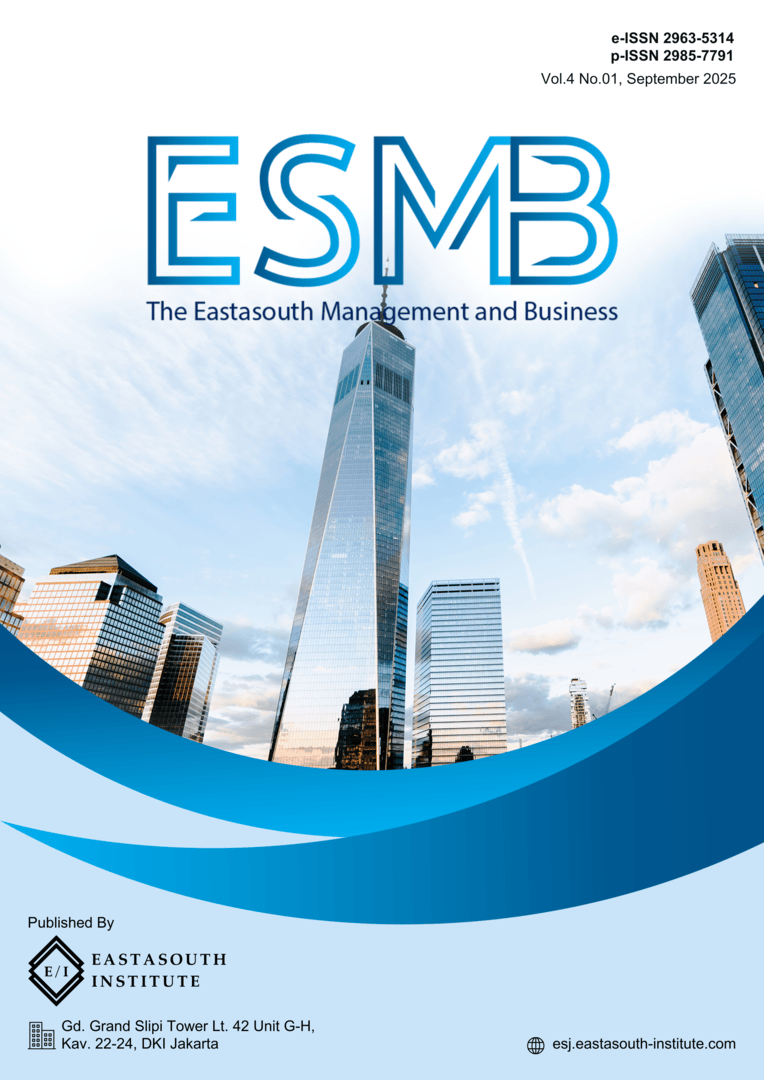Bibliometric Analysis of Research on the CAGE Distance Framework in International Business
Main Article Content
Abstract
This study investigates the research trends and intellectual structure surrounding the CAGE Distance Framework in international business through a bibliometric analysis. Using Scopus as the primary database and VOSviewer for visualization, the study examines patterns of publication, collaboration networks, and thematic developments over time. The findings indicate that research on the CAGE framework has evolved from general discussions of globalization and institutional distance to more refined applications in analyzing cultural, administrative, geographic, and economic differences. Keyword mapping reveals a concentration of studies on globalization, cultural distance, and administrative distance, with the “CAGE distance framework” emerging as a dominant conceptual anchor. The analysis also highlights the central contributions of leading scholars and institutions, as well as the growing integration of the framework into international management and strategy research. This study contributes by consolidating existing knowledge, identifying intellectual clusters, and outlining opportunities for future exploration, particularly in the context of digital globalization and sustainable business practices.
Article Details

This work is licensed under a Creative Commons Attribution-ShareAlike 4.0 International License.
References
G. Pankaj, “Distance still matters: the hard reality of global expansion,” Harv. Bus. Rev., vol. 79, no. 8, pp. 137–147, 2001.
H. Miloloža, “Differences between Croatia and EU candidate countries: the CAGE distance framework,” Bus. Syst. Res. Int. J. Soc. Adv. Innov. Res. Econ., vol. 6, no. 2, pp. 52–62, 2015.
D. Mukhopadhyay and D. Das, “Bilateral Foreign Direct Investment Inflows in Emerging Market Economies: A Study based on CAGE Framework.,” Focus J. Int. Bus., vol. 7, no. 1, 2020.
H. S. Lee, C. Pattnaik, and A. S. Gaur, “Internationalization of I-business Firms: The role of distance on location choice,” J. Bus. Res., vol. 164, p. 114010, 2023.
S. Ramanayake, “Determinants of Foreign Direct Investment: A Comparative Analysis of Distance Factors,” South Asian J. Financ., vol. 5, no. 1, 2025.
V. Wohlgemuth, T. Lehmann, and A. Ammeraal, “Challenges in Higher Education Teaching Collaborations–a CAGE distance framework analysis,” in 6th International Conference on Higher Education Advances (HEAd’20), 2020, no. 30-05–2020, pp. 735–742.
I. C. M. Antunes, H. G. Barandas, and F. V. Martins, “Subsidiary strategy and managers’ perceptions of distance to foreign markets,” Rev. Int. Bus. Strateg., vol. 29, no. 4, pp. 347–364, 2019.
A. Inkaewa and O. Phokawattanaa, “International Market Selection For Frozen Shrimp Exports From Thailand: An Integration Of Cage Distance Framework And Data Envelopment Analysis”.
L. J. Zhu et al., “ChIPpeakAnno: a Bioconductor package to annotate ChIP-seq and ChIP-chip data,” BMC Bioinformatics, vol. 11, no. 1, p. 237, 2010.
C. C. Evans et al., “Exercise prevents weight gain and alters the gut microbiota in a mouse model of high fat diet-induced obesity,” PLoS One, vol. 9, no. 3, p. e92193, 2014.
C. J. Bruns and J. F. Stoddart, “Rotaxane-based molecular muscles,” Acc. Chem. Res., vol. 47, no. 7, pp. 2186–2199, 2014.
J. T. Campbell, L. Eden, and S. R. Miller, “Multinationals and corporate social responsibility in host countries: Does distance matter?,” J. Int. Bus. Stud., vol. 43, no. 1, pp. 84–106, 2012.
J. M. Davis, E. A. Murphy, M. D. Carmichael, and B. Davis, “Quercetin increases brain and muscle mitochondrial biogenesis and exercise tolerance,” Am. J. Physiol. Integr. Comp. Physiol., 2009.
H. Kawaji, H. Horie, S. Yamanaka, and M. Ishikawa, “Superconductivity in the silicon clathrate compound (Na, Ba) x S i 46,” Phys. Rev. Lett., vol. 74, no. 8, p. 1427, 1995.
F. Hildebrand et al., “Inflammation-associated enterotypes, host genotype, cage and inter-individual effects drive gut microbiota variation in common laboratory mice,” Genome Biol., vol. 14, no. 1, p. R4, 2013.
J. E. Harries et al., “A survey of estrogenic activity in United Kingdom inland waters,” Environ. Toxicol. Chem., vol. 15, no. 11, pp. 1993–2002, 1996.
P. Joshi, M. Meyer, T. DeRose, B. Green, and T. Sanocki, “Harmonic coordinates for character articulation,” ACM Trans. Graph., vol. 26, no. 3, pp. 71-es, 2007.

